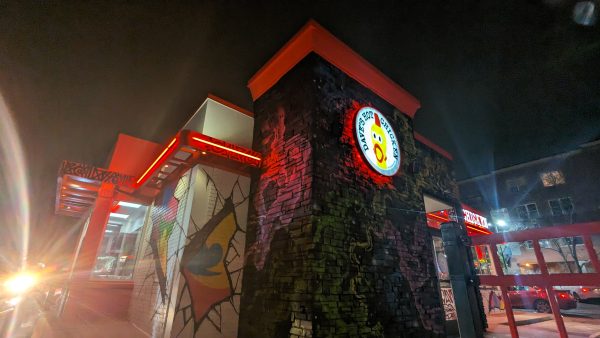Do students support racial segregation?
Freedom of association on college campuses must not be confused with racial segregation.
April 24, 2019
On April 1, 2019 PragerU released a YouTube video led by Ami Horowitz, saying that “Leftist Students Support Segregation.” Over the past couple of years, there have been multiple opinion columns from news outlets such as The Wall Street Journal, Forbes and The Federalist with a similar message. They claim that there has been a new wave of racial segregation on American college campuses, and that it has been created by the identitarian left. To anyone who might value racial diversity and multiculturalism, it might seem shocking that modern-day university students would openly admit to supporting segregation. However, I thought about the phrases that Horowitz used to question the students:
“Would you support the school saying we’re going to offer black student separate housing?”
or…
“Would you support black students having their own separate graduation?”
I thought, what if someone asked me this? How would I respond? In the college context, it is assumed that black students are the ones asking for these programs so as to strengthen their racial community. Admittedly, I probably would have responded with something similar to the students who answered that they would be fine with it if that was what the black students wanted. That is because Horowitz is not asking if they support racial segregation. He is asking if they support freedom of association.
Although the concept of racial segregation comes with an unnerving reminder of the pre-civil rights era and a seeming alliance with the arguments posed by white supremacists who coined the phrase “separate but equal,” simply having separate interest groups on the basis of race is not the same situation that civil rights fought against. The problem with the pre-civil rights era is that white supremacists used government power to control and enforce racial segregation, utilizing Jim Crow laws to mandate the segregation of public schools, public places and public transportation. The extradition of these laws does not make separate interest groups or voluntary segregation illegal or necessarily wrong.
Today we still see many examples of these “special interest groups” that cater according to race, such as black churches, black universities, ethnicity community centers, etc. Although these were created as a direct result of Jim Crow segregation, today they provide space to celebrate specific cultures, by choice. White supremacists claim that the existence of these organizations is proof of double standards and that there is nothing wrong with “white-focused” groups. The difference between these examples and the common practices that white supremacists use to attain racial groupage is on the basis of coercion. For example, I once was welcomed into an Ethiopian church, even though I am not Ethiopian. Although the church is labeled as “Ethiopian,” it cannot barr non-Ethiopians from attending. On the flip side, many white supremacists talk about having “white-only” towns and neighborhoods, something they can only attain by red lining and assaulting anyone who breaks the separation.
Racial segregation is a sensitive topic in American politics. With it comes the slippage of enforced segregation laws so as to “protect” the boundaries and infringement of these groups; it also competes with our beliefs and ideals of multiculturalism. If college campuses want to continue supporting the diverse wants and needs of racial communities, awareness of the fine line between freedom of association and racial segregation is crucial. Take, for instance, the case at Evergreen State when Professor Bret Weinstein challenged the university mandate that white students and faculty leave campus for a day dedicated to people of color.
In the words of Professor Weinstein, “There is a huge difference between a group or coalition deciding to voluntarily absent themselves from a shared space in order to highlight their vital and under-appreciated roles, and a group or coalition encouraging another group to go away.” The first instance, he argued, “is a forceful call to consciousness.” The second “is a show of force, and an act of oppression in and of itself.” In summation, racial groups are free to self-segregate themselves if they so choose, but the minute they tell other people where they should be, how are they any different than white segregationists?





